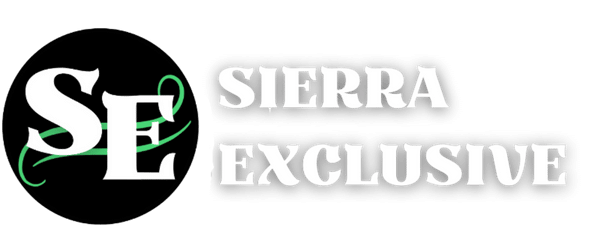A content promotion plan is a documented strategy that outlines how you’ll distribute your content across owned, earned, and paid channels to reach your target audience and achieve specific marketing goals.
If you’re looking to create an effective content promotion plan, here’s a quick framework:
- Set clear SMART goals (traffic, leads, engagement)
- Define your target audience segments and personas
- Select distribution channels (owned, earned, paid)
- Create a content calendar with timing and responsibilities
- Optimize content for each platform
- Measure results using relevant KPIs
- Adjust and iterate based on performance data
You’ve spent hours crafting the perfect blog post, designing an eye-catching infographic, or recording an insightful podcast. But after publishing… crickets. Sound familiar?
Here’s the hard truth: creating great content is only half the battle. Without a strategic plan to get it in front of the right people, even your most brilliant work will collect digital dust.
“The best content doesn’t win. The best promoted content wins.” – Derek Halpern
In today’s overcrowded digital landscape, where over 4.7 million people use social media worldwide and the first search result gets 10× more clicks than the tenth, simply hitting “publish” isn’t enough. Content saturation is real, and organic reach continues to decline across platforms.
This is where a robust content promotion plan becomes essential. It’s the difference between shouting into the void and starting meaningful conversations with your ideal customers.
I’m Seth Gillen, founder of Sierra Exclusive Marketing, and I’ve spent over 10 years developing and refining content promotion plans that have helped businesses grow from startup to $10M+ in annual revenue.

What Is a Content Promotion Plan?

A content promotion plan is your roadmap to ensuring all that brilliant content you’ve created actually reaches the people who need to see it. I like to explain it with a simple analogy: if creating content is like cooking a gourmet meal, then promotion is serving it on fine china rather than tossing it on the floor and hoping someone notices.
As our friends at Quuu humorously point out, promotion without a proper plan is essentially “catapulting burgers” at potential customers—messy, wasteful, and ultimately ineffective. Nobody wants burger splatter on their business suit, and your audience doesn’t want random content hurled their way either.
Before we dive deeper, let’s clear up some common terminology confusion that I see tripping up even experienced marketers:
| Term | Definition | Focus |
|---|---|---|
| Content Marketing Strategy | The “why” behind your content efforts | Business case, audience, brand story |
| Content Strategy | How you’ll govern and manage content | Creation, publication, maintenance |
| Content Promotion Plan | How you’ll distribute and amplify content | Channels, timing, tactics, measurement |
Your content promotion plan specifically addresses distribution across three main channel types that work together throughout your buyer’s journey:
- Owned media: These are the channels you control completely—your website, blog, email newsletter, and social media profiles. You make the rules here.
- Earned media: This is visibility you gain through others—shares, mentions, PR coverage, and backlinks. It’s like word-of-mouth, but for the digital age.
- Paid media: These channels require financial investment—PPC ads, social media promotion, sponsored content, and influencer partnerships.
Understanding these distinctions matters because each channel type requires different approaches, timelines, and measurement methods. You wouldn’t measure the success of a paid Facebook ad the same way you’d evaluate an email newsletter, right?
Key Elements Inside a Plan
A truly effective content promotion plan isn’t just a vague idea to “post more on social media.” It contains several crucial components that work together:
First, you need SMART goals—Specific, Measurable, Attainable, Relevant, and Time-bound objectives that give your efforts direction. Without these, you’re essentially driving without a destination.
You’ll also want clearly defined KPIs (Key Performance Indicators) to track your success. These might include website traffic, engagement metrics, lead generation numbers, or conversion rates.
Understanding your audience personas is non-negotiable. These detailed profiles of who you’re trying to reach will inform everything from channel selection to messaging tone.
Your channel mix should be strategic, not scattered. Select platforms based on where your audience actually spends time and which formats best showcase your content type.
A thoughtful timeline prevents the “feast or famine” approach to content distribution. When and how often will you share? How will you keep content fresh without overwhelming your audience?
Finally, good governance establishes who’s responsible for execution and approval processes. This prevents the all-too-common situation where great plans die because nobody knew whose job it was to implement them.
Without these elements clearly documented, your promotion efforts will lack direction and measurability—and in today’s competitive landscape, that’s something no business can afford. Want to learn more about building your SEO foundation? Check out our SEO resources for additional guidance.
Why You Need a Content Promotion Plan in 2025
The digital landscape has evolved dramatically, making strategic promotion more crucial than ever:
- Algorithm shifts: Social platforms and search engines continually update how content is displayed and ranked
- Zero-click content: Featured snippets and knowledge panels satisfy user queries without website visits
- Short-form video dominance: 73% of consumers prefer short-form videos when researching products or services
- AI-generated content: Increasing competition as creation barriers lower
- Declining organic reach: Facebook organic reach dropped 52% in 2016 and has continued to decline
These trends create both challenges and opportunities. Without a plan, your content will struggle to compete in increasingly crowded spaces.
Consider this: the first search result on Google gets 10 times more clicks than the tenth result. This stark reality means promotion can’t be an afterthought—it must be strategic and deliberate.
The average social media user spends 2 hours and 29 minutes daily across platforms. Your content promotion plan helps you capture a slice of that attention in a targeted, efficient way.
Business Benefits
Beyond visibility, a solid content promotion plan delivers tangible business benefits:
- Brand awareness: 80% of B2B marketers say content marketing helps create brand awareness
- Trust building: 75% of B2B marketers report content marketing builds credibility and trust
- Education: 70% say it effectively educates their audiences
- Lead generation: Properly promoted content drives qualified prospects into your funnel
- ROI maximization: Strategic promotion ensures your content creation investment pays off
- Competitive edge: Only 40% of B2B marketers have a documented content strategy, giving those who do an advantage
In the Sacramento and greater Northern California region, we’ve seen businesses achieve 3-5x higher engagement rates when implementing a structured promotion plan versus ad-hoc distribution.
A Step-by-Step Content Promotion Plan Framework
Now that you understand the importance of a content promotion plan, let’s build one from scratch:

Setting Goals for Your Content Promotion Plan
Every effective plan begins with crystal-clear goals. I’ve found that using the SMART framework transforms vague wishes into achievable targets.
When I work with clients in Sacramento, I always emphasize that “increase blog traffic” won’t cut it. Instead, we aim for something like “increase blog traffic from Sacramento small business owners by 25% within 90 days.” See the difference?
Your goals should be Specific enough to focus your efforts, Measurable so you know when you’ve succeeded, Attainable so you don’t set yourself up for disappointment, Relevant to your broader business objectives, and Time-bound with clear deadlines.
Most businesses I work with focus on 2-3 primary goals each quarter, such as driving website traffic, generating quality leads, boosting engagement, building authority, or increasing conversions. This targeted approach keeps teams focused rather than chasing too many metrics at once.
Need more guidance on email strategies to support your goals? Check out our Email Marketing Best Practices for Increased Engagement.
Research & Understand Your Audience
I can’t stress this enough: knowing exactly who you’re trying to reach transforms your promotion efforts. It’s like the difference between shouting in a crowded room versus having an intimate conversation with a friend.
Start by building detailed personas that go beyond basic demographics. What keeps your ideal customers up at night? Where do they hang out online? What content formats do they prefer?
A client of mine in Rancho Cordova was shocked when our audience research revealed their B2B software prospects were most active on LinkedIn during Tuesday mornings and strongly preferred case studies over other content types. This single insight completely transformed their promotion strategy and doubled their engagement rates.
Don’t forget that 51% of consumers unfollow brands because of irrelevant content. Your research helps ensure every promotion effort lands with impact rather than driving people away.
Choose & Layer Distribution Channels
Not all channels deserve your attention. Your content promotion plan should prioritize platforms based on where your audience actually spends time, which channels complement your content type, and your available resources.
I like to think of channel selection as building a three-layer cake:
The foundation is your owned media – your website, blog, email newsletters, and social profiles. You control these completely, and they typically deliver the highest ROI. For most of my clients in Elk Grove, we start by strengthening this foundation before expanding outward.
The middle layer is earned media – the visibility you gain through others sharing your content, PR coverage, guest blogging opportunities, and community engagement. While you have less control here, these channels build credibility through third-party endorsement.
The top layer is paid media – including social advertising, search engine marketing, native advertising, and influencer partnerships. These channels offer predictable reach but require budget investment.
For more insights on maximizing social channels, explore our Social Media Marketing Strategies.
Craft & Repurpose Assets
One of my favorite content promotion secrets is repurposing. Why create something once when you can transform it into multiple formats? It’s like getting five meals from one grocery trip.

I recently helped a Davis healthcare provider transform their comprehensive wellness guide into a content promotion powerhouse. We created vertical infographics for Pinterest, carousel posts for Instagram, and short video clips for TikTok – each custom to the platform’s unique specifications and audience expectations.
Remember to make sharing effortless with prominently placed social buttons, Click-to-Tweet quotes throughout your articles, and proper Open Graph tags to control how your content appears when shared. These small touches can dramatically increase your content’s reach without additional promotion effort.
Optimize for Search & Findability
The content that ranks well promotes itself 24/7. That’s why SEO remains essential to any content promotion plan.
I’ve seen how proper keyword mapping, compelling meta titles and descriptions, strategic internal linking, and schema markup can transform a piece’s visibility. For my clients in Rocklin and Fair Oaks, focusing on location-specific long-tail keywords often yields faster ranking improvements and higher-quality traffic than competing for broader terms.
The first search result gets 10 times more clicks than the tenth. That difference can mean thousands of monthly visitors without spending a dime on ads.
Don’t limit your optimization to Google, either. Each platform has its own search ecosystem – YouTube needs optimized tags and descriptions, Pinterest thrives on keyword-rich pin descriptions, and podcast directories have their own ranking factors.
For comprehensive SEO guidance, visit our SEO Resources page.
Launch, Schedule & Automate
Timing matters more than most marketers realize. Your content promotion plan should include a detailed calendar with strategic posting times for each platform.
Here’s a tip I share with all my clients: schedule posts a few minutes off the hour (9:57 or 10:03) to avoid the automated posting rush that happens on the hour and half-hour. This small adjustment can increase visibility in crowded feeds.
For most businesses in Antelope and Carmichael, I recommend a phased promotion approach: go heavy on launch day across all channels, continue with daily reshares using different messaging angles during the first week, switch to weekly reshares of top performers for the first month, then incorporate monthly reshares of evergreen content ongoing.
Leverage automation tools to maintain consistency without overwhelming your team. Tools like Buffer for scheduling, email marketing automation platforms, and content recycling tools can help you maintain a consistent presence without requiring constant attention.
Measuring Success of Your Content Promotion Plan
Without measurement, you’re just guessing. Your content promotion plan should include dashboards for real-time monitoring, a regular reporting schedule, and channel-specific metrics aligned with your goals.
I learned this lesson dramatically with a Woodland e-commerce client. Our analytics revealed that their Instagram Stories drove significantly higher-quality traffic than their Facebook ads, despite lower overall numbers. This insight allowed us to reallocate budget for better ROI – something we would have missed without proper measurement.
Track traffic metrics (visitors, page views), engagement metrics (time on page, scroll depth), social metrics (shares, comments), email performance, conversion metrics, and SEO indicators. Then use this data to double down on what’s working, test new approaches for underperforming content, and refresh older material with new promotion tactics.
For more about understanding your marketing performance, check out What is Content Distribution? and research on ad fatigue to keep your campaigns fresh.
Frequently Asked Questions about Content Promotion Plans
How often should I update my content promotion plan?
Think of your content promotion plan as a living document that grows with your business. While quarterly reviews and annual updates provide a solid foundation, different elements need attention at different frequencies.
Your channel strategy deserves a fresh look every three months because social media platforms love to shake things up with algorithm changes (just when you thought you had Instagram figured out, right?). Meanwhile, your core messaging might only need annual refreshes, unless your industry suddenly gets turned upside down.
I’ve found with our West Sacramento and Lincoln clients that newer marketing programs benefit from monthly check-ins. This gives us enough data to spot trends without making knee-jerk reactions to normal fluctuations.
While your tactical approach should remain flexible, your mission and business goals should stay relatively stable. It’s like keeping your destination the same while being willing to try different routes to get there.
What metrics matter most for B2B vs. B2C promotion?
B2B and B2C companies are like different species in the marketing ecosystem – they thrive on different nutrients (or in this case, metrics).
For B2B companies, quality trumps quantity at every turn. You’re looking for depth rather than breadth: how long prospects spend with your content, how many pages they explore, and whether they’re forwarding your emails to colleagues. LinkedIn engagement becomes your north star, along with webinar registrations and how often your sales team actually uses the content you create.
B2C businesses care more about casting a wider net. Reach and impressions matter greatly, especially on visual platforms where your products can shine. You’ll want to track user-generated content (those customer photos are marketing gold!), conversion rates, and mobile engagement since consumers often shop on their phones while watching Netflix.
For our clients in Davis and Rocklin who serve both audiences, we create separate reporting dashboards. This prevents the B2C metrics from drowning out important B2B signals or vice versa – it’s like having separate scorecards for two different games.
Can I run an effective plan on a small budget?
Absolutely! While having a hefty budget is nice, creativity often outperforms cash when it comes to content promotion.
Some of our most successful small business clients in Carmichael and Fair Oaks built impressive audiences before spending a dime on ads. They focused on email marketing to nurture existing relationships, participated thoughtfully in online communities where their ideal customers gathered, and formed strategic partnerships with complementary businesses.
Other budget-friendly tactics that deliver impressive results include employee advocacy (your team members often have untapped networks), content repurposing (turning one blog post into multiple social posts, an infographic, and podcast talking points), and guest appearances on established platforms.
The secret is to master a few channels rather than dabbling in many. I’d rather see you become the most valuable contributor in one relevant Reddit community than post mediocre content across six different social platforms.
As your business grows, you can gradually introduce paid promotion to amplify what’s already working organically. This approach builds a solid foundation that makes every advertising dollar work harder when you’re ready to invest.
Conclusion
Creating content without a promotion plan is like building a store in the desert—no matter how amazing your products, without foot traffic, you’ll struggle to succeed.
A well-crafted content promotion plan ensures your valuable content reaches the right audience at the right time through the right channels. It transforms content from an expense into an investment with measurable returns.

At Sierra Exclusive Marketing, we’ve helped businesses across Sacramento, Roseville, Folsom, and the entire Northern California region develop and implement content promotion plans that drive real results. We’ve seen how the right promotion strategy can breathe life into content that would otherwise go unnoticed.
I remember working with a local Roseville retailer who had been creating beautiful blog content for months with minimal engagement. After implementing a structured promotion plan, their traffic increased by 215% in just 60 days, and more importantly, their lead generation quadrupled. That’s the power of strategic promotion.
Whether you’re just starting out or looking to optimize your existing promotion efforts, success comes down to a few fundamental principles:
Start with clear, measurable goals that align with your business objectives. Without this foundation, you’ll struggle to determine if your efforts are actually working.
Take the time to deeply understand your audience—their habits, preferences, and pain points. The most effective promotion speaks directly to your ideal customer’s needs, not to everyone.
Choose your channels strategically based on where your audience actually spends time, not just what’s trending. A focused approach on three well-selected channels will outperform scattered efforts across ten platforms.
Make your content work harder through thoughtful repurposing. Blog post that took 8 hours to create? Transform it into social media snippets, an email series, or a video script to maximize your return on that investment.
And perhaps most importantly, measure relentlessly and be willing to adjust your approach. The digital landscape changes quickly, and the ability to pivot based on real data is what separates successful content marketers from the rest.
Ready to take your content promotion to the next level? We offer Full-Service Digital Marketing solutions custom to your specific business needs, with a results-driven approach backed by our guarantee: achieve meaningful outcomes, or you don’t pay.
Contact us today to discuss how we can help amplify your content and achieve your marketing goals. Your brilliant content deserves to be seen—let’s make sure it happens.




